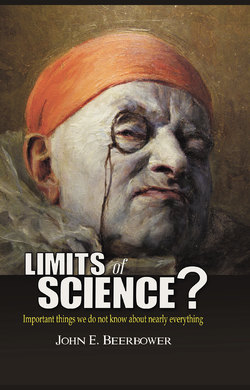Читать книгу Limits of Science? - John E. Beerbower - Страница 25
На сайте Литреса книга снята с продажи.
Another example: medical science
ОглавлениеLet me turn to another example of differences between the theory of evolution and other sciences that may not strictly meet the condition of falsifiability or disconfirmability. Medical science is generally probabilistic—that is, the predictions are set out in terms of statistical likelihood rather than absolute predictions. However, modern medical science tends to incorporate statistical correlations with theoretical structures into which other empirical evidence can be folded for some greater degree of confirmation. As just one illustration, after the identification in 1989 of an abnormality of the prostate labeled “prostatic intraepithelial neoplasa” or PIN and the observation that the condition PIN occurred with great frequency with prostatic cancer, efforts were made to understand the relationship between PIN and cancer.
For example, was PIN a precursor to cancer in the sense that the same cells displaying the abnormality would likely become cancerous (in a direct causal pathway)? Did PIN tend to occur simultaneously with cancer in different cells as a result of some other underlying causal factor that would lead to both conditions? Or, was PIN a likely event on a progression that led to cancer appearing in other cells? The analysis involved not only sampling of a statistical nature but also the examination of the cell structures arising in both conditions, the types of genetic alterations that occurred and the progression of both conditions. The studies also utilized animal models tested through experimentation. See Chapter 9, “Neoplasms of the Prostate,” by David G. Bostwick and Isabelle Meiers, in Bostwick and Liang Cheng, Urologic Surgical Pathology (2008), pp.443–580.
Again, the predictions could not strictly be disconfirmed, since probabilistic outcomes can be consistent with very unrepresentative results (like finding the toss of a coin coming up heads 10 times in a row), but it would seem that this approach to science is clearly appropriate and meaningful. Indeed, the methodological approaches in medicine are largely different from the deductive theories we normally equate with the physical sciences.31
Of course, one might argue that the methodological approaches in medical science reflect the limitations of our current knowledge, rather than a different ultimate conception of what the science should and, hopefully, someday could be. It is conceivable that with a sufficient understanding of all of the relevant initial conditions (the physiology of the patient) and of the pathogens to which the patient has been exposed, we may someday be able to make predictions that are not just probabilistic.32 Even if that turns out to be the case, the methodological approaches that make use of the knowledge that we do have and can hope to achieve in the shorter term are entirely justifiable.
These alternative approaches to knowledge and understanding can be very instructive and productive. Indeed, a persuasive case can be made that our classically-derived Western view of science and scientific method, as reflected in classical mechanics as well as modern physics, threatens actually to be a serious limitation on or hindrance to comprehensive knowledge of the world. It has been asserted that this traditional scientific view is too narrow and restrictive, ignoring (or excluding) major aspects of human experience (including art, music, many emotions and, perhaps, even consciousness). See, e.g., Feyerabend, The Tyranny of Science, pp.6–12, 54–6, 68–9. Arguably, the dominance of a restrictive view of science based upon the model of classical physics may not just hinder the appreciation of other types of knowledge, it may also hinder the continued development of physics itself.
